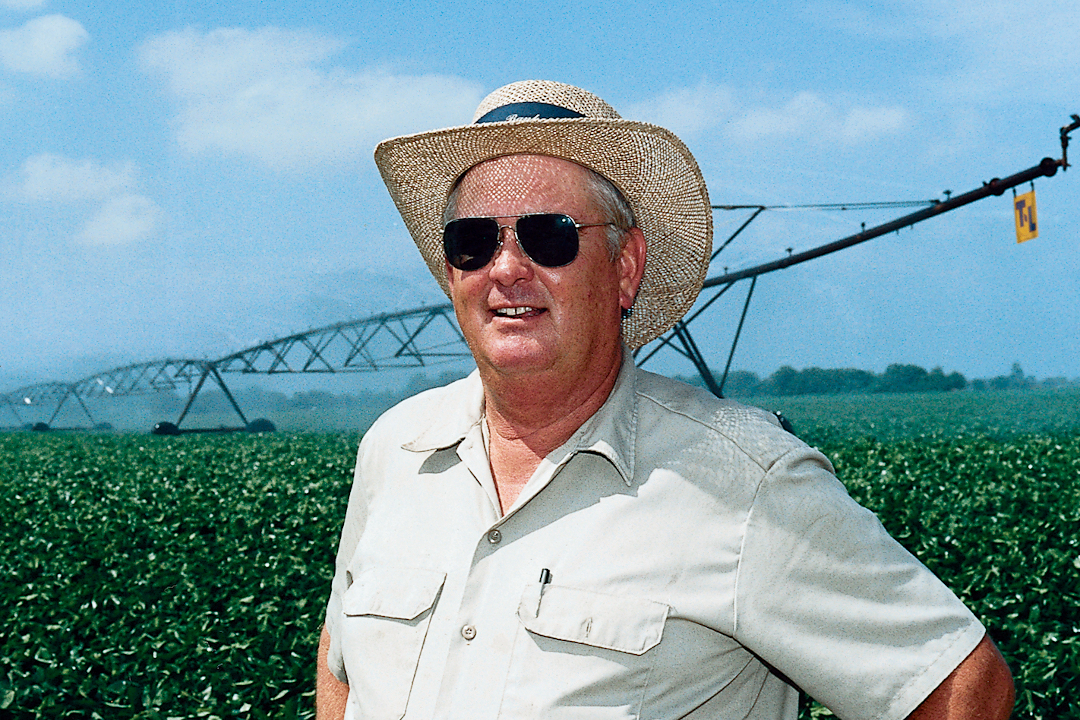Dennis Penter
"I have a lot of land that's really not level that would be too expensive to irrigate any other way than by center pivot, a T-L center pivot system just walks across such a field with no problem at all."
There are no ifs, ands, or buts about it when Dennis Penter firmly points out that, “Without irrigation I’d be out of the cotton business. It’s just not possible to survive on a 650- to 700-pound an acre dryland cotton yield anymore.”
All of his 1,600 acres near Truman, Arkansas, are planted in cotton. Penter was an early innovator, in other words a pioneer, in the use of irrigation on cotton in his area. Now his irrigated yields average 1,200 pounds an acre, with up to three bales an acre going to the gin from some fields.
He utilizes three methods of irrigation: flood, polypipe, and center pivot. Each has its own advantages and disadvantages, he believes. For example, investment cost per acre for flood irrigation might be a little less on land that’s virtually flat and that can be put to grade easily.
However, labor needs are high and it’s the least efficient water usage. Polypipe is more efficient than flood irrigation and lower in overall cost, however it’s also heavily demanding of labor, requires more attention and care during the season and is discarded every fall.
Thirteen years ago, Penter installed his first of many center pivot irrigation systems. His initial reason was, “I got into center pivot irrigation in order to water as many acres of cotton as possible.”
“I have a lot of land that’s really not level that would be too expensive to irrigate any other way than by center pivot,” he adds. “A center pivot system just walks across such a field with no problem at all.”
He also learned that with a center pivot he can much more quickly pre-water a field, readily change water application rate by varying the speed of the center pivot, get back into a field sooner, and also efficiently activate herbicides.
As for the usually lower capital cost of flood over center pivot that’s touted by some, maybe the opposite is true in the long run, he wonders. For instance, when Penter sold one of his pivot systems that had run ten seasons, his depreciation totaled only $1,400 a year.
Then there’s another important factor that’s seldom noted when comparing the various methods of irrigation, yet has a big influence on yields, according to Penter. When a field is precision leveled, the best topsoil is usually moved from the high spots to the low areas.
“It can take up to three years, and sometimes five years, to bring the areas cut the deepest back into full production of cotton,” he comments. “On a typical 160-acre field, 20, 30, or maybe even 40 acres may be affected. This doesn’t happen with a center pivot installation.”
Based on his experience with several makes of center pivot systems, Penter emphasizes his first preference is for hydraulically driven T-L center pivots rather than electrically driven systems. “It can about work you to death to tow an electric center pivot to another field. Three men might be able to move two of them in a long day. On the other hand, due to unique towable features, just two men using less equipment can tow and move three T-Ls in a day,” he says.
Penter also thinks that, “electricity and water just don’t mix,” when reliability and serviceability are concerned. “And, we are really cautious with our electric center pivot, hoping there are no electrical shorts while we’re standing in water trying to fix something,” says Penter.
Of his seven T-L machines, the oldest is now in its 13th season. He reports he’s had to replace only two gear boxes in those center pivots in all that time. Yet on one electric center pivot alone he’s needed to replace as many as five gearboxes a year.
“In the spring, I look them over, air up the tires, grease the gearboxes, and the T-L center pivots are ready to go to work,” Penter says. “They provide dependable rain every week.” Doug Richie of Bay, Arkansas, irrigates with both center pivot and polypipe, but says there’s no contest for which method he prefers.



